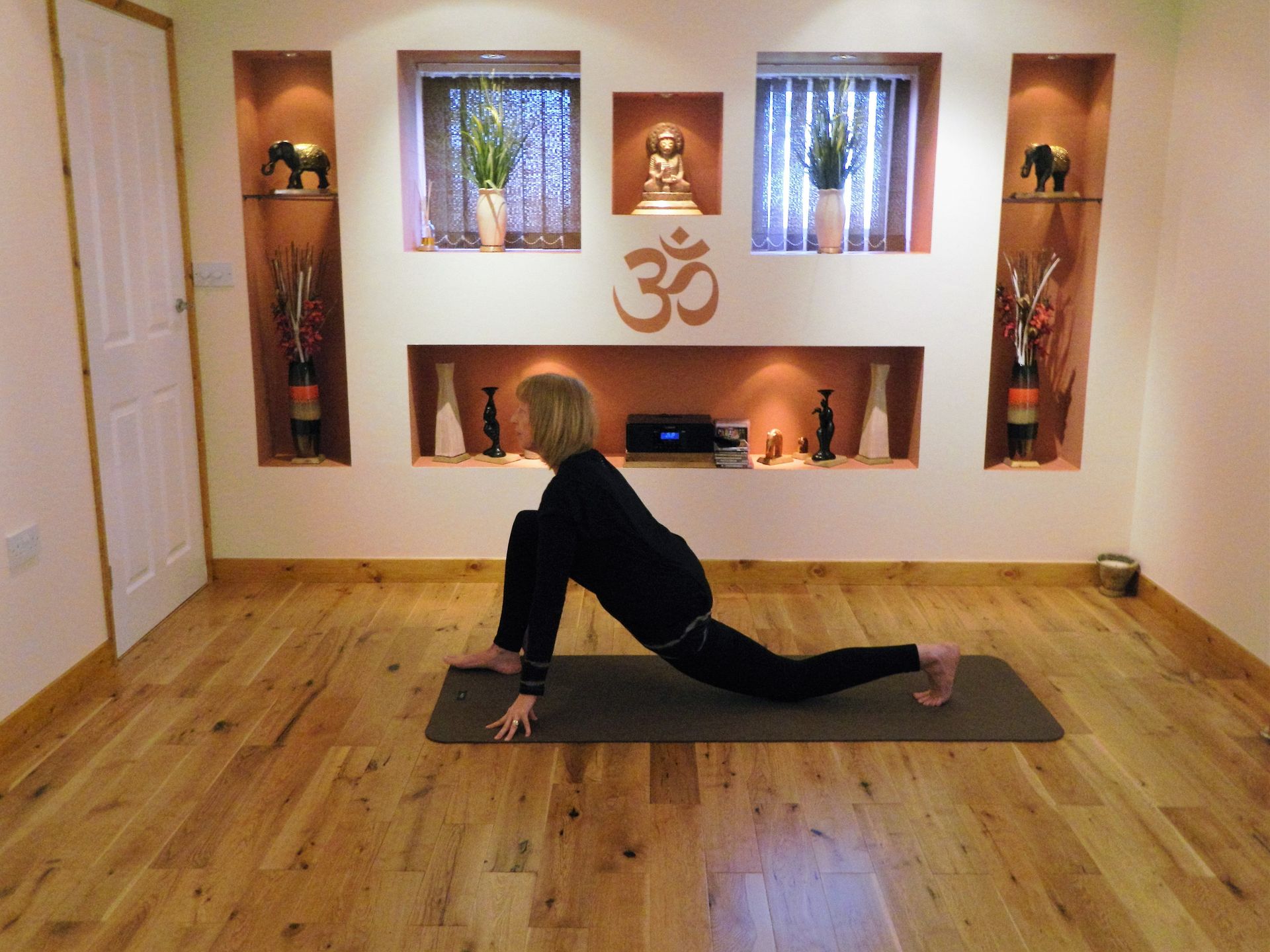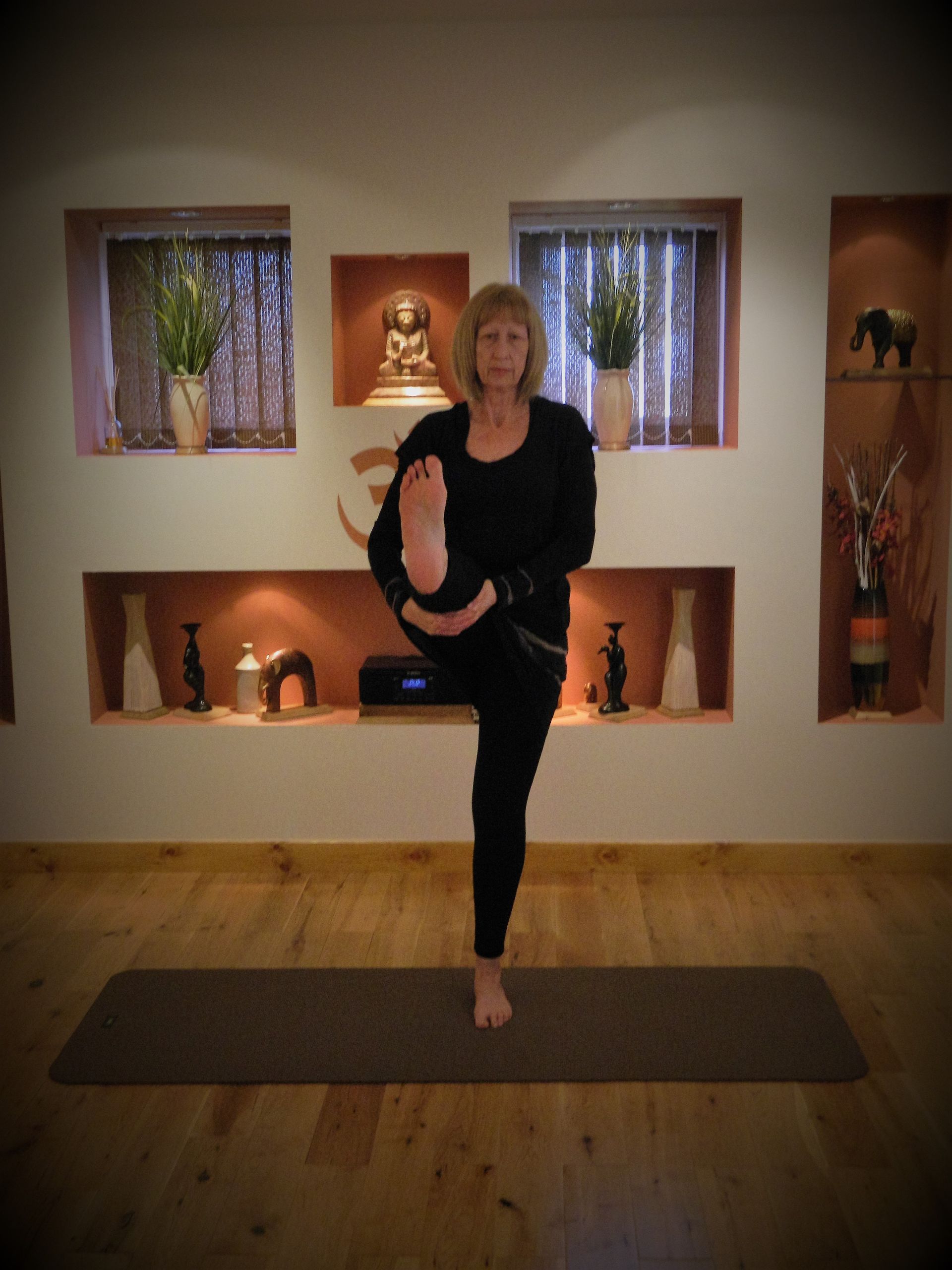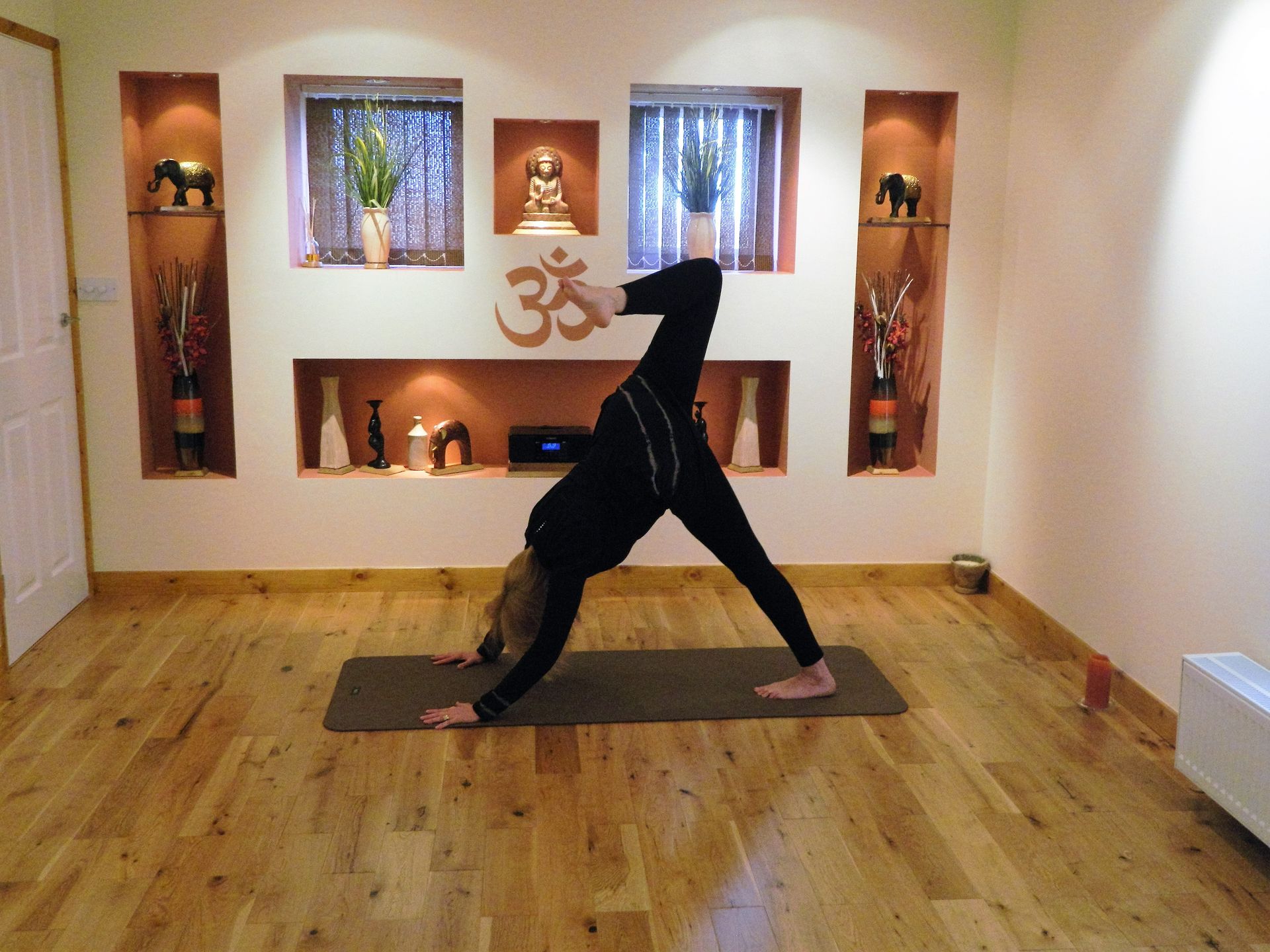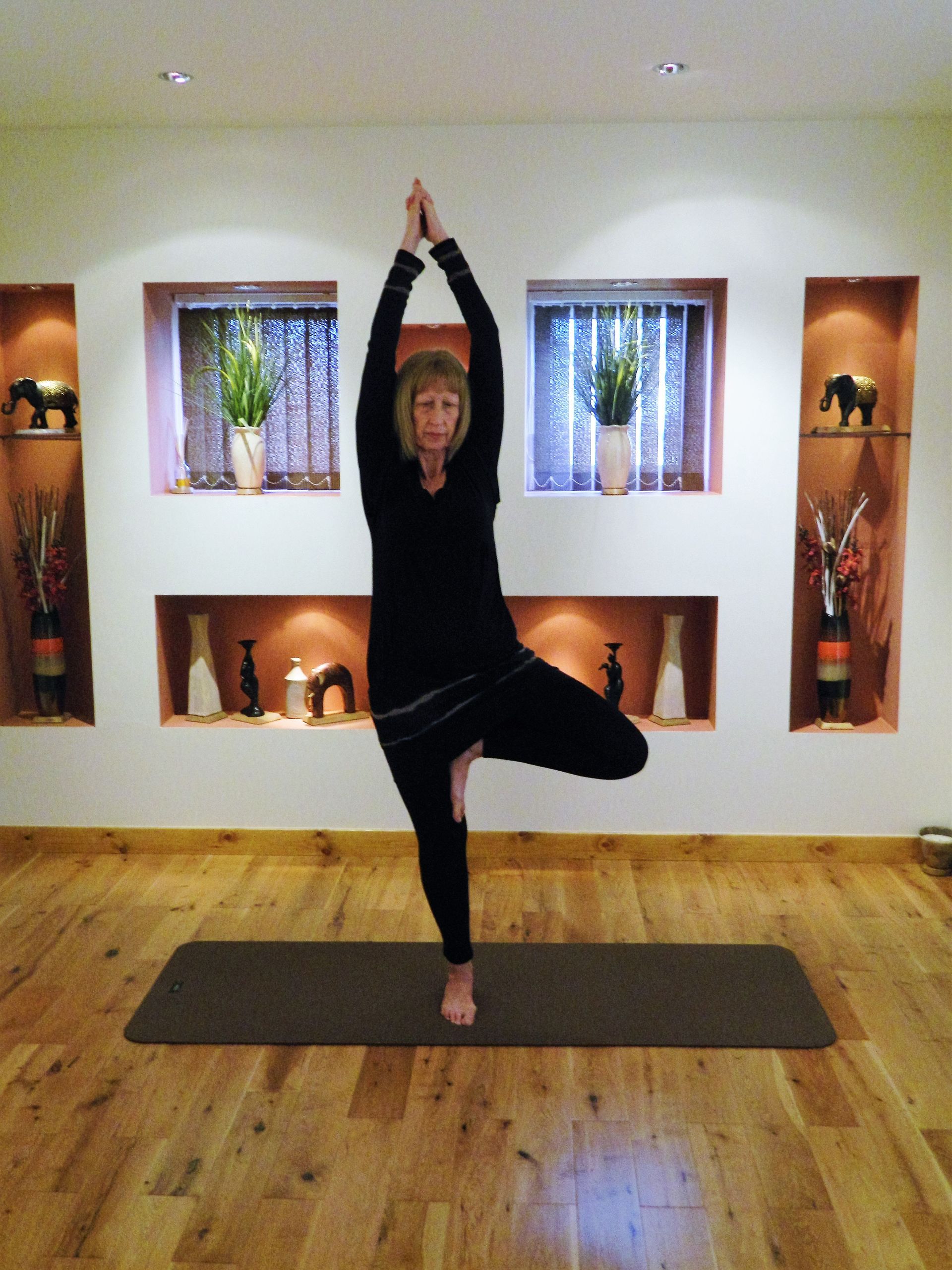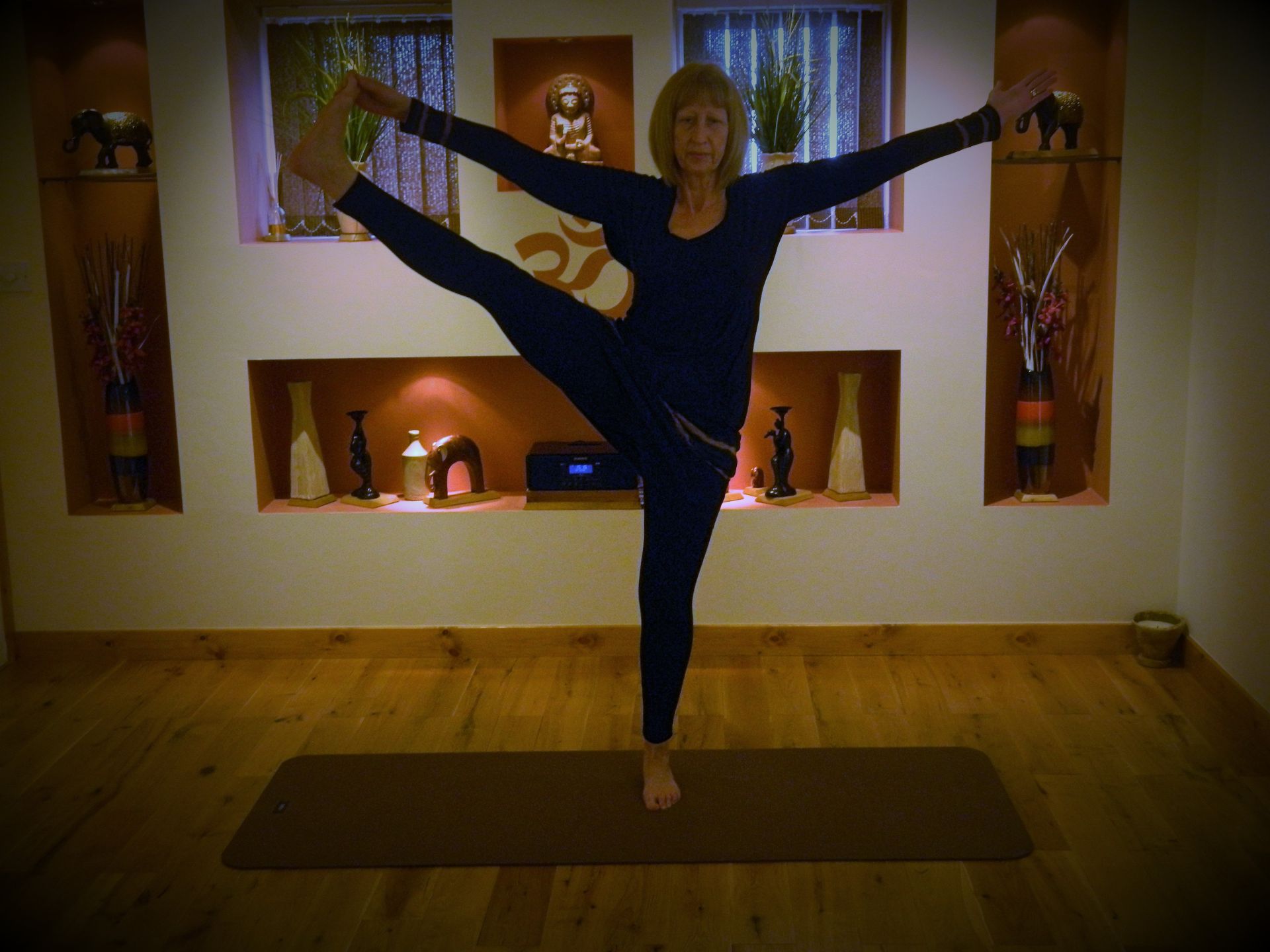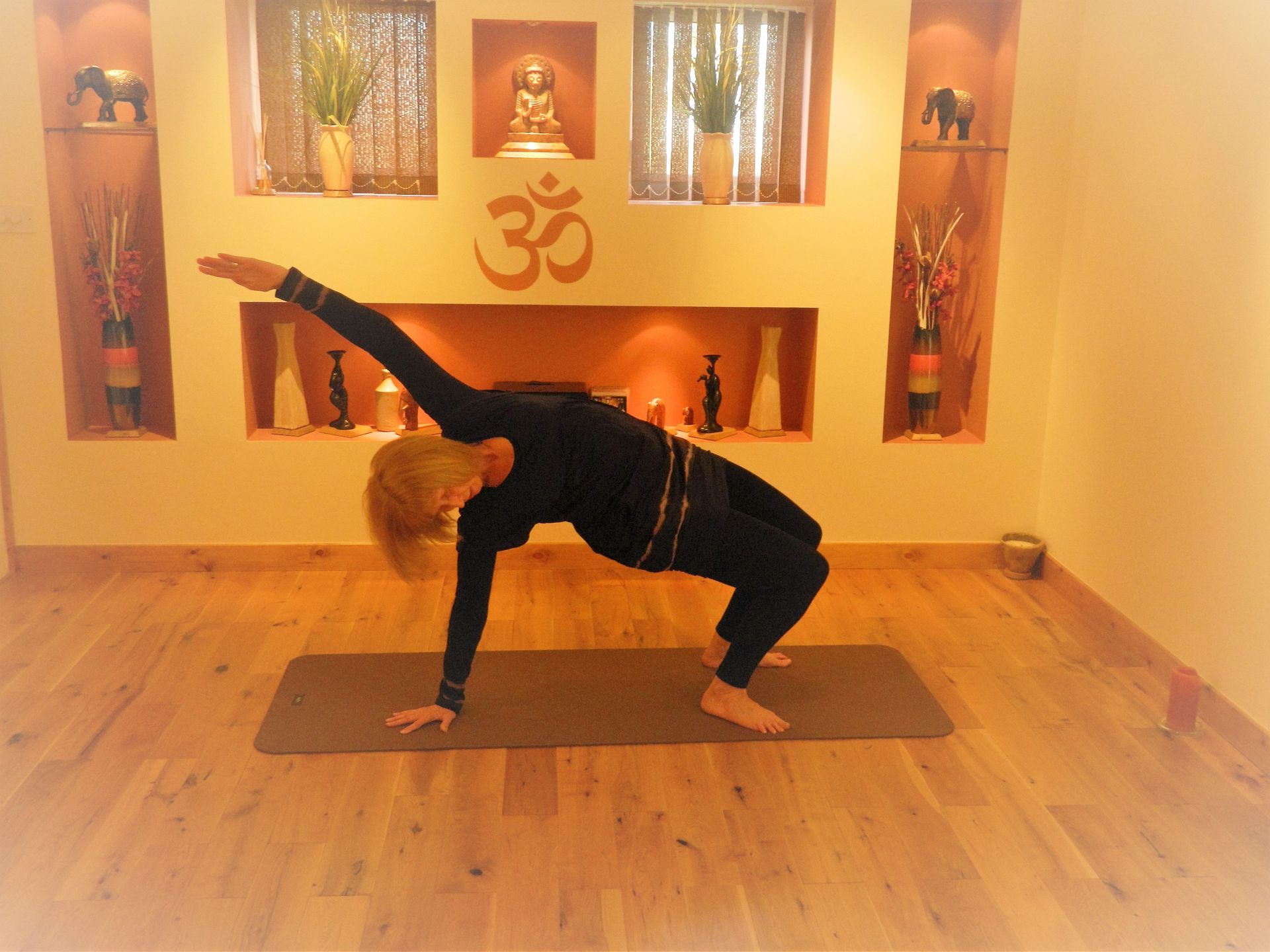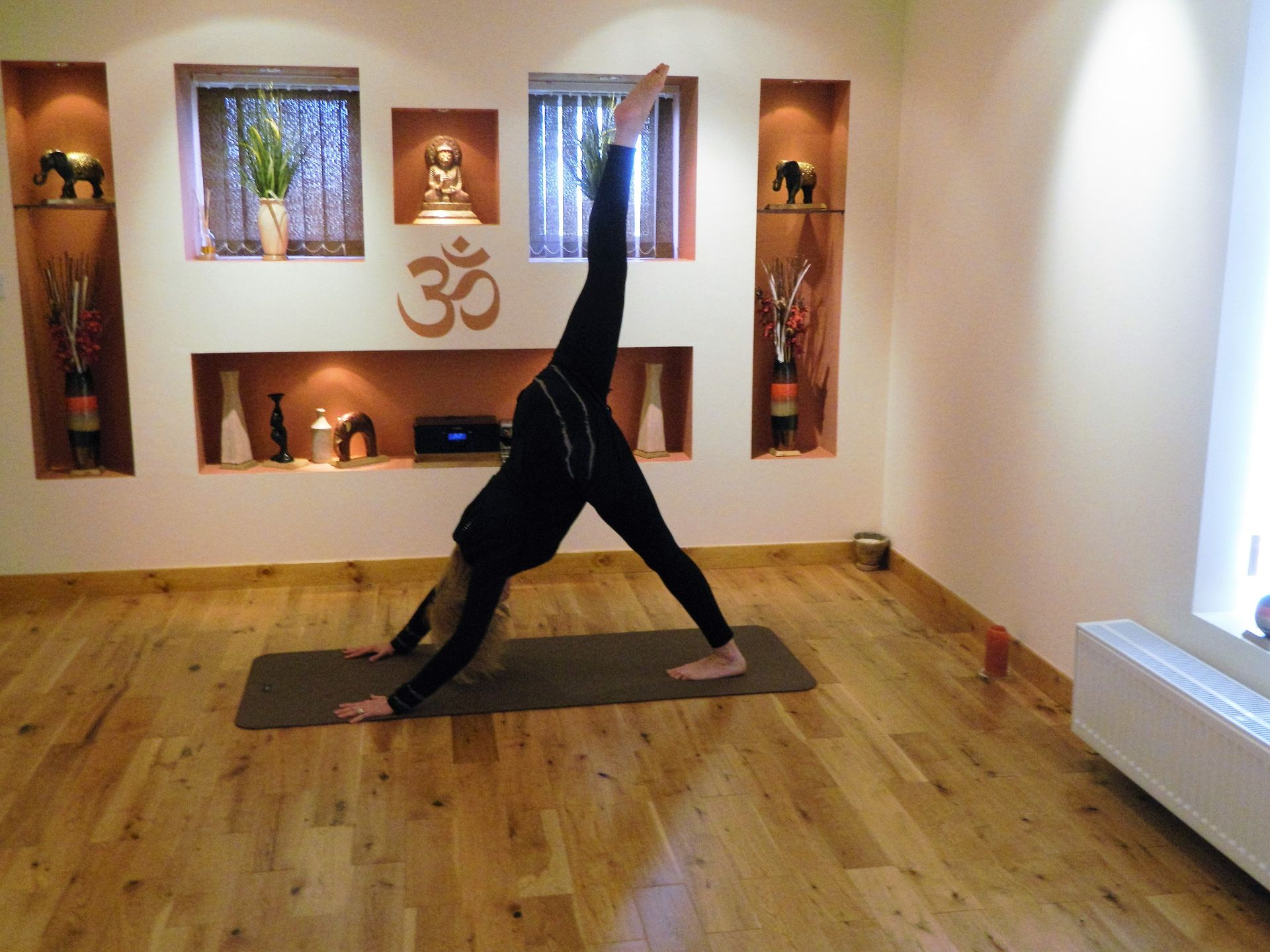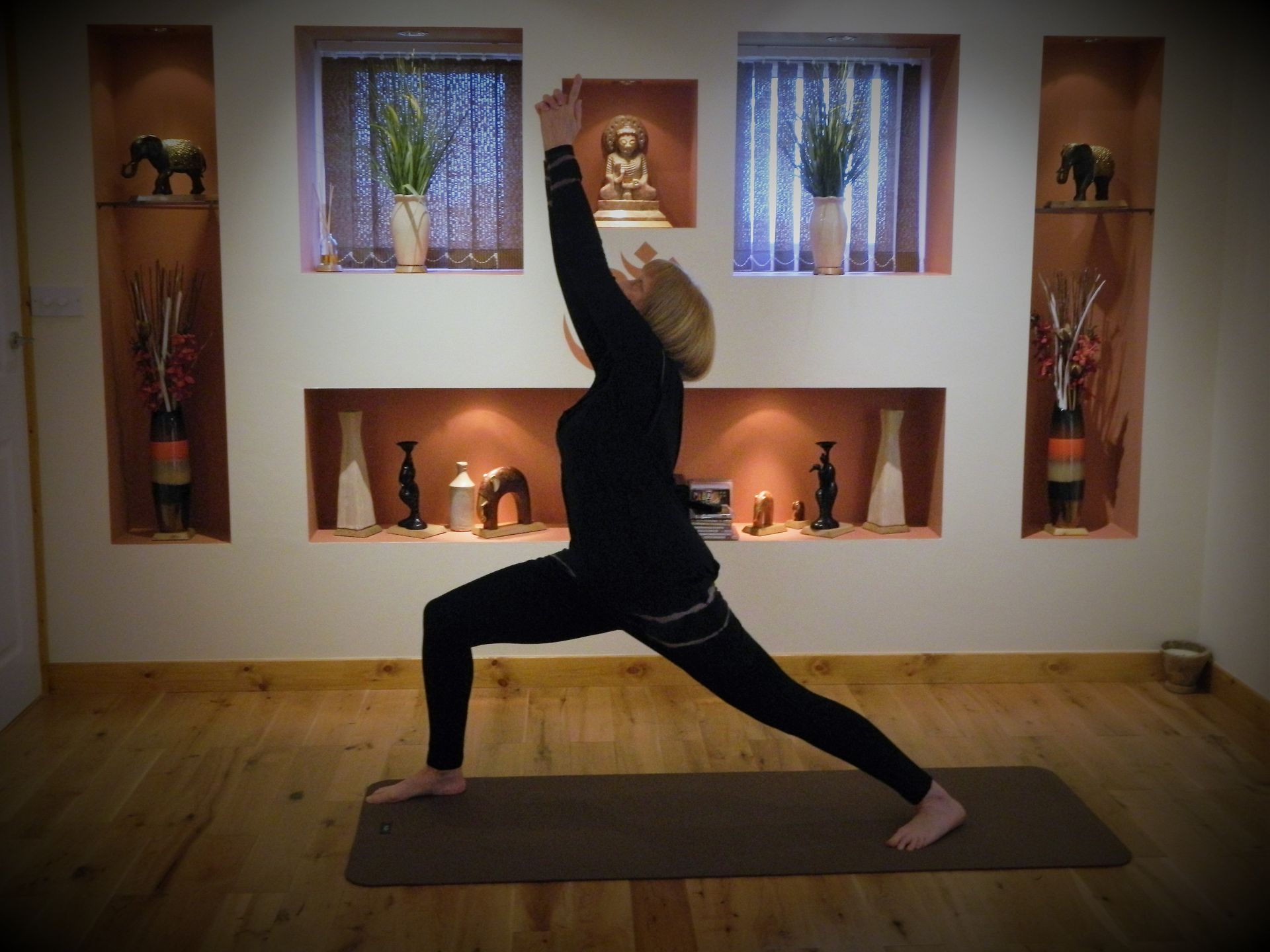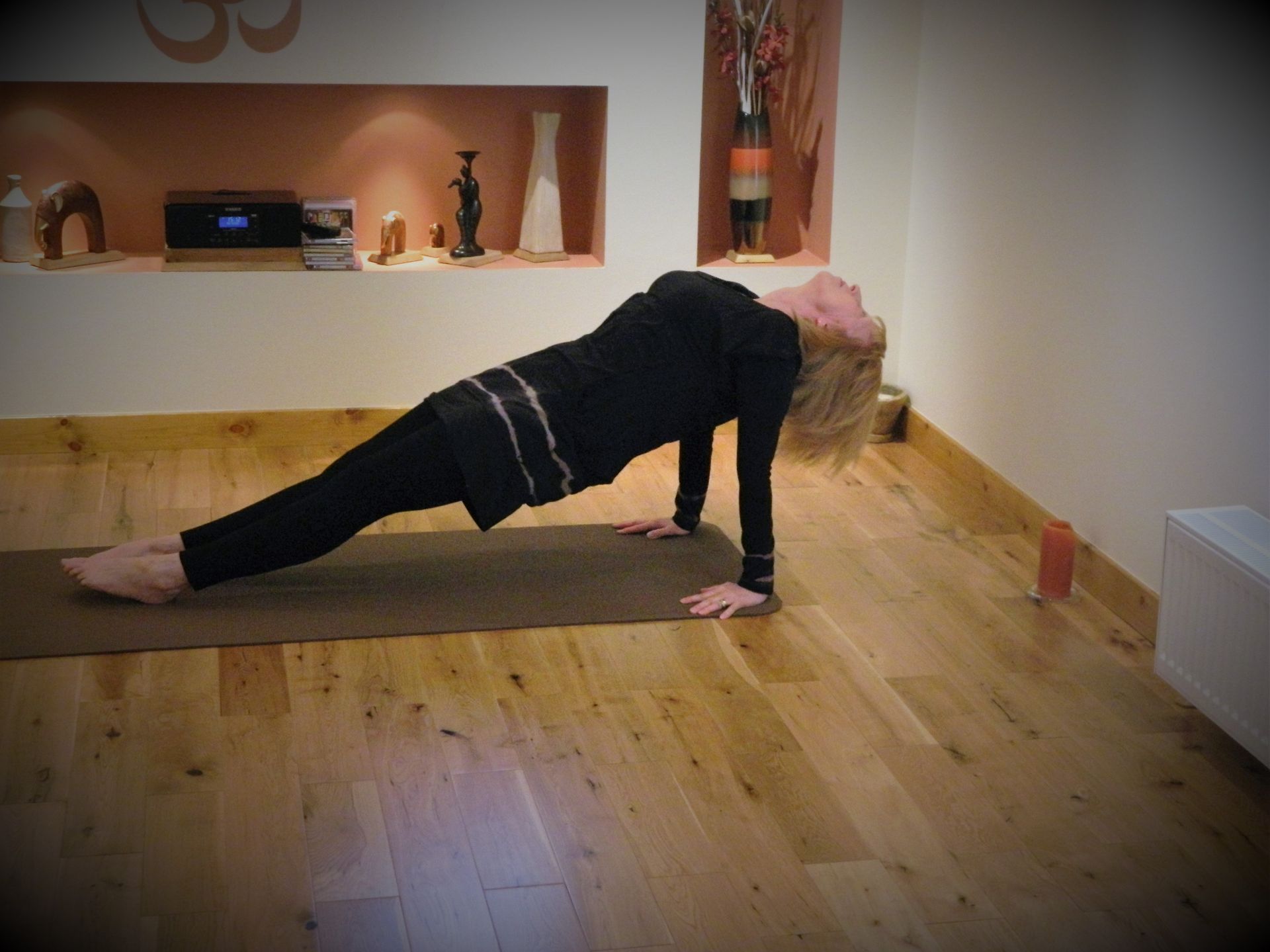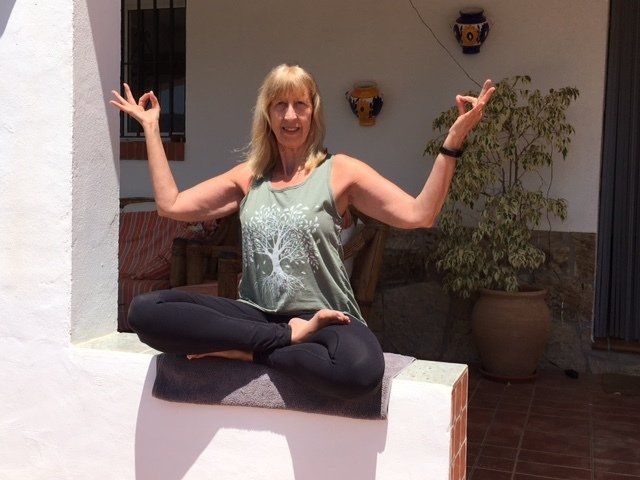CarolsYoga and Pilates

Slide Title
CarolsYoga
Button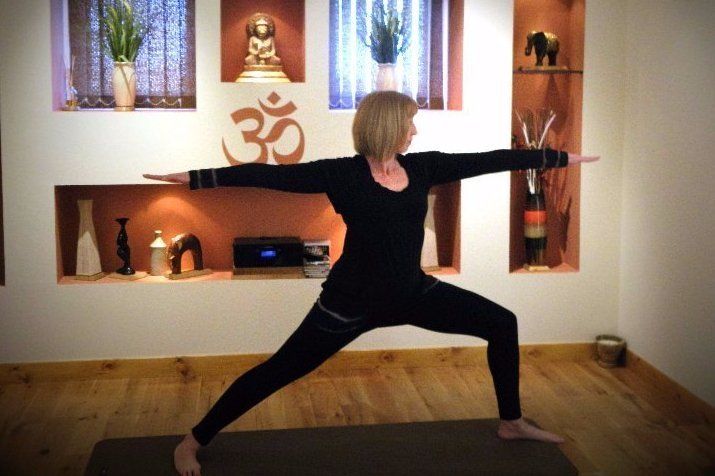
Slide Title
CarolsYoga
Warrior II
Virabhadrasana
ButtonSlide Title
CarolsYoga
Low Lunge
Anjaneyasana
ButtonSlide title
Carolyoga
Standing on one leg
ButtonCarolsyoga
CarolsYoga
Wide Legged forward bend
Prasarita Padottanasana
ButtonSlide Title
CarolsYoga
Hip Opener
ButtonCarolsYoga Tree
CarolsYoga
Tree
Vrksasana
ButtonSlide title
CarolsYoga
Upright Big Toe Sequence
Uttita Hasta Padangusthasana
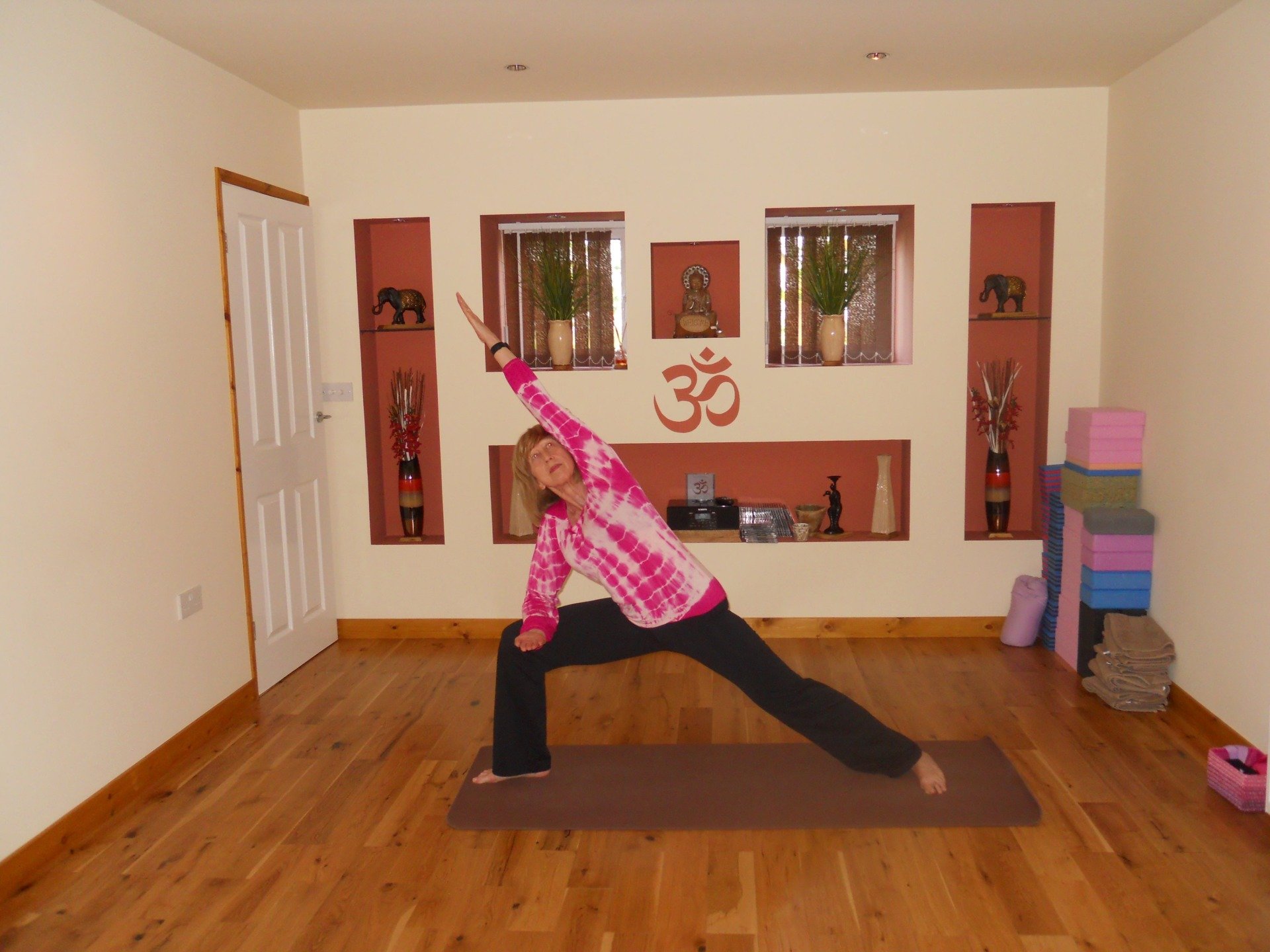
CarolsYoga
Extended Side Angle
Uttita Parsvakanasana
ButtonSlide title
CarolsYoga
Reverse Table with extended arm
CarolsYoga
3 Legged Dog
Slide title
CarolsYoga
Warrior I
Virabhadrasana
Slide title
CarolsYoga
Upward Plank
Purvottanasana
Slide title
CarolsYoga
Side Angle
ButtonSlide title
CarolsYoga
Button
The practice of yoga helps to co-ordinate the breath, mind, and body to encourage balance, both internally and externally and to promote a feeling of relaxation .
When people refer to “ Yoga ” in general, this is actually hatha yoga. Hatha yoga was introduced in the 15th century in India and it is the most popular yoga style. It can also be thought of as one of the “parents” of yoga as many other styles have originated from hatha yoga, including power yoga, bikram yoga, ashtanga yoga, and kundalini yoga. The word “Hatha” is Sanskrit, with “ha” meaning “sun”, and “tha” meaning “moon”.
Yoga is a therapy that aims to unite the mind, soul and body. Most yoga styles are derived from hatha yoga, a type of yoga that focuses on the body and breath and aims to develop control the body through poses (or asanas ) . Hatha represents the two sides of life – the yin and the yang, the dark and the light – and aims to bring these two sides into harmony and balance. All styles of yoga balance the body, mind and spirit but how they do so may differ. Some styles focus on the poses, while others may focus on breath work , alignment or the flow of movement.
Breathing is very important in yoga as the breath signifies your vital energy. In yoga, being able to control your breath can help you to control your body and your mind. No matter which style of yoga you choose there are many classes available and the health benefits are many.
By making yoga a part of your daily routine, you may become aware of subtle changes in your approach to life. In your yoga class you may well begin to glimpse a state of inner peace...your true Nature.
Yoga offers us a holistic approach to body, mind and spirit, which can provide us with the ‘tools’ to cope with the challenges of daily life. Yoga can also complement medical science and therapy for specific conditions.
You may be drawn to yoga simply for health and fitness, or be seeking relief for a specific physical condition. Or you might want help with managing stress,yoga is a self practice and totally non-competitive.
Yoga is a journey where you can observe yourself improve physiaclly , mentally and emotionally.
Pilates is a uniquely precise and intelligent approach to exercise and body-conditioning, which gives you a leaner, suppler, more toned body and calmer, more relaxed mind.
it takes its name from Joseph Pilates, a German-born emigre to Britain and then America, who devised it in the early part of the last century.
It will also reduce or eliminate back and neck pain.

